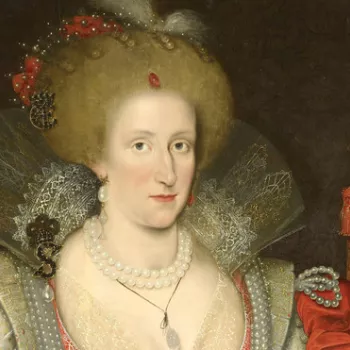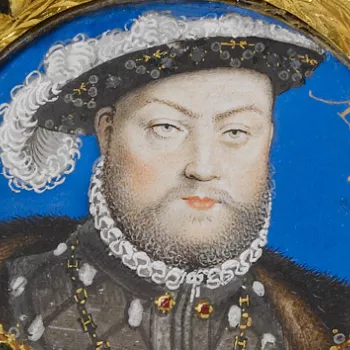Hunting sword, by-knife and scabbard 1544
RCIN 61316
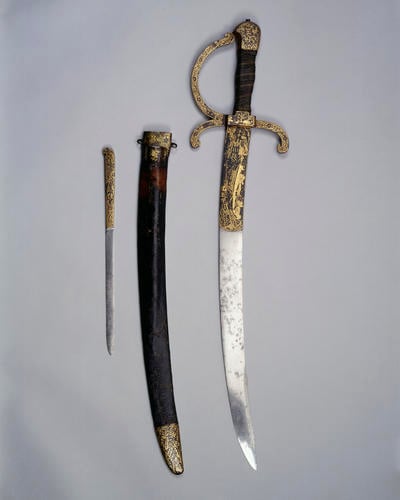
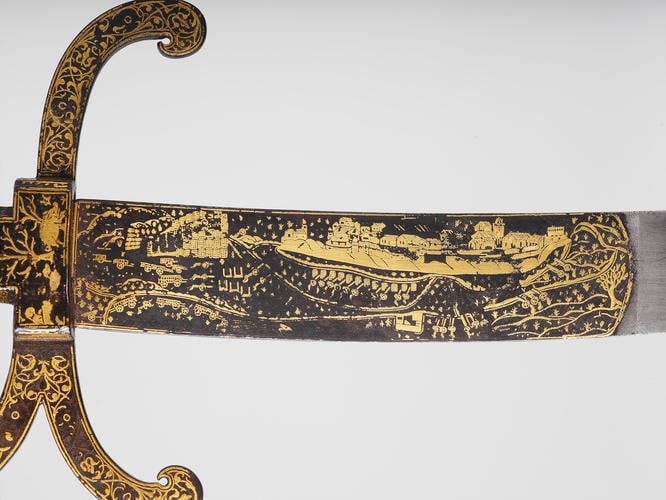

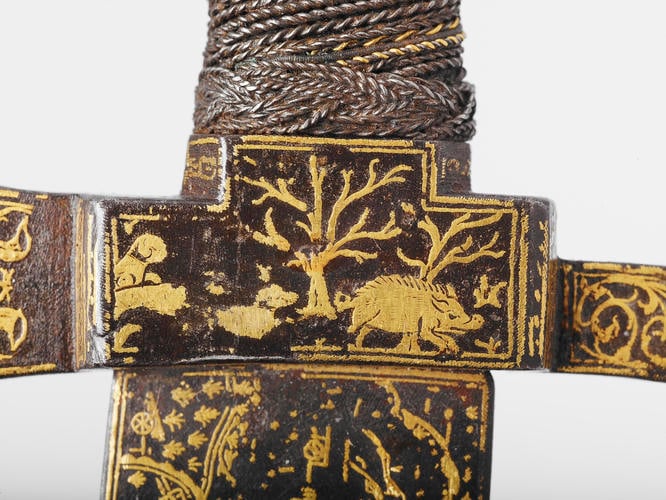


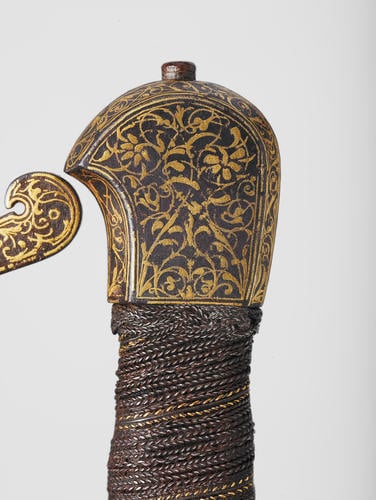
-
This is one of the few surviving works made by the Spanish decorator of arms Diego de Çaias while he was employed by Henry VIII between 1543 and 1547. It was probably one of the items described in the inventory of the King's possessions taken after his death in the latter year as 'iij longe woodknives ij of them of Dego his makinge'. The sword is in the form of a hunting weapon, with an auxiliary knife decorated in the same style of 'counterfeit' damascening (in which thin gold wires are pressed into lines incised on a hatched background). The wooden scabbard, covered in tooled black leather, is probably an eighteenth-century replacement, with the original iron mounts reapplied. The grip of the sword, which is made of wood and bound with iron wire, is also thought to be a replacement.
The decoration includes hunting scenes of a kind to be expected on a weapon of this type, but the great interest lies in the miniature topographical scene at the top of the sword blade. It depicts with some accuracy the siege of Boulogne, which began on 19 July 1544 and was conducted under Henry VIII's direct command from 26 July; the French defenders eventually capitulated on 14 September. The city of Boulogne appears to the upper right, while on the left can be seen the offensive mound on which the English artillery was arranged. The Latin elegiac inscription on the other side of the blade may have been written by a court poet in celebration of the victory; the sword was presumably made soon afterwards. It is unsigned, but the style of the gold decoration is extremely close to signed examples of Diego de Çaias's work, in particular the mace made for Henry II of France now in the Metropolitan Museum of Art, New York.
The sword inscribed on one side of the blade, damascened in gold HENRICI OCTAVI / LETARE BOLONIA / DVCTV PVRPVREIS / TVRRES CONSPICIE / NDA ROSIS IAM / TRACTA IACEN [sic] / MALE OLENTIA / LILIA PVLSVS G / ALLVS ET INVI[C]TA / REGNAT IN ARCE / LEO SIC TIBI NEC / VIRT[V]S DEERIT / NE[C GR]ATIA FOR / MAE [CV]M LEO / TVTELA CVM / ROSA [S]IT DECORI (Rejoice Boulogne in the rule of the eighth Henry. Thy towers are now seen to be adorned with crimson roses, now are the ill-scented lilies uprooted and prostrate, the cock is expelled, and the lion reigns in the invincible citadel. Thus, neither valour nor grace of beauty will fail thee, since the lion is thy protection and the rose thy ornament [translation by Claude Blair])
Catalogue entry from Royal Treasures, A Golden Jubilee Celebration, London 2002Provenance
Commemorating Henry VIII capture of Boulogne sur Mer from the French in 1545. Private museum of George Wallis, Hull, by 1798; Earl of Londesborough, by 1857; his sale, Christie's, London, 4-11 July 1888; Frederic Spitzer sale, Paris, 10-14
July 1895; Prince Ladislao Odescalchi, Rome; from whom acquired by Queen Elizabeth II, 1966.




